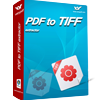TIFF Merger
The application TIFF Merger can merge multiple TIFF image files to a single one with only some easy clicks, which is helpful when you want to browse, store or transfer many TIFF files because the single one is more convenient. TIFF Merger also supports several kinds of compression methods when merging files such as LZW, Zip, PackBits, etc.
Please download the application via clicking here for a free trial version, and buy a single-user personal license or a single-user commercial license for it if you need the unlimited function of the program. Moreover, the multi-user commercial license, multi-user personal and site license are available to be purchased on the homepage. There are also two other command line licenses. According to your need, you can buy command line server license or command line developer license.
Please see Figure1, it is the main interface of TIFF Merger. If you want to see different effects of the thumbnails in image preview area in the middle, please click the buttons on the top of the interface. The application allows you to zoom out, zoom in, rotate, reverse, etc. the image file for browsing different effects. There are many buttons below the preview area and file list. You can add the TIFF image files to the file list on the right of the interface by clicking on “Add File (s)” button. If you want to delete the image file one by one or at a time, please click “Remove” or “Remove All”. For the purpose of add files, you can also drag the TIFF images into the file list or right click the mouse in the list and choose “Add Files” option.

Figure 1
After that, please click "Merge All" button to merge multiple TIFF image files to a single file. The popup "Save As" dialog box will remind you to choose a directory for target file in "Save in" combo box, edit the name for the target file in "File name" edit box. Then please click "Save button".
Seconds later, you will be able to see only a single file in specified location after you merge multiple TIFF image files to a single one. Please see Figure2.

Figure 2
You can browse the target file with any kind of image processing or editing program and you will see there are four pages in this single TIFF image file.
Features of TIFF Merger:
- Support Windows 2000 and later systems of both 32bit and 64bit.
- Combine lots of TIFF files into one TIFF file in batch.
- Able to rename output TIFF image files automatically.
- Allow to viewing TIFF thumbnails via nice TIFF image preview window.
- Support to rotate the thumbnails when previewing them.
- Functions of zooming in or out are available.
- Support to get the detailed information of TIFF files by right clicking on the image files.
 VeryPDF Cloud OCR API
Web to PDF Converter Cloud API
HTML to Image Converter Cloud API
Free Online PDF Toolbox
VeryPDF Cloud OCR API
Web to PDF Converter Cloud API
HTML to Image Converter Cloud API
Free Online PDF Toolbox  Free Online Advanced PDF Converter
Free Online PDF Compressor
Free Online PDF Splitter
Free Online DOCX to DOC Converter
Free Online Word to PDF Editor
Free Online ShareFile
Free Online RSS Feed to Email
Free Online Advanced PDF Converter
Free Online PDF Compressor
Free Online PDF Splitter
Free Online DOCX to DOC Converter
Free Online Word to PDF Editor
Free Online ShareFile
Free Online RSS Feed to Email
 Free Online Web Site to PDF Maker
Free Online URL to PDF Converter
Free Online PDF to Word Converter
Free Online PDF to Image Converter
Free Online URL to Image Converter
Free Online Image Converter
Free Online DOC to PDF Converter
Free Online OCR Converter
Free Online PDF Merger
Free Online PDF Stamper
Free Online PDF Page Resizer
Free Online Web Site to PDF Maker
Free Online URL to PDF Converter
Free Online PDF to Word Converter
Free Online PDF to Image Converter
Free Online URL to Image Converter
Free Online Image Converter
Free Online DOC to PDF Converter
Free Online OCR Converter
Free Online PDF Merger
Free Online PDF Stamper
Free Online PDF Page Resizer
 Free Online Photo Slideshow
Free Online File Converter
Free Online Photo Slideshow
Free Online File Converter  Online PDF to Excel Converter
Online PDF to Excel Converter



 Relative Products
Relative Products




 You may like these products
You may like these products




